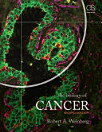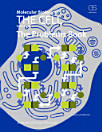Wnt Signaling in Development and Disease
Terry P. Yamaguchi · Karl Willert
মাৰ্চ ২০২৩ · Current Topics in Developmental Biology কিতাপ 153 · Elsevier
ইবুক
424
পৃষ্ঠা
family_home
যোগ্য
info
reportমূল্যাংকন আৰু পৰ্যালোচনা সত্যাপন কৰা হোৱা নাই অধিক জানক
এই ইবুকখনৰ বিষয়ে
Wnt Signaling in Stem Cells, Development and Regeneration, Volume 153, delves into the biology of Wnt signaling in a wide variety of model organisms. Since their first identification in 1982, Wnt proteins and their downstream effectors have captivated the attention of many researchers in a variety of fields, including developmental biology, cell signaling, structural biology, stem and cancer cell biology and regeneration. Wnt signaling, along with a small number of highly conserved signaling modules including the Hedgehog, FGF, BMP, RA and Notch pathways, orchestrates morphogenesis across all metazoans. Readers will find information on recent discoveries in the Wnt field, including interactions between Wnt and other signaling pathways, and tools and technologies to interrogate the complexity of Wnt signaling. Other chapters cover Wnt signaling in Xenopus neural development, Wnt signaling in hematopoietic stem cell development, Wnt signaling and the maintenance and regeneration of the gut epithelium, Wnt signaling in the skeleton as a basis for Wnt-based regenerative medicine, and Non-canonical Wnt5a-Ror signaling: Insights from human congenital disorders and cancer. - Presents newest findings on the role of Wnt signaling in a variety of tissues and organisms - Illustrates the diverse actions of Wnt signaling in development and disease - Highlight tools and technologies to interrogate Wnt signaling in any biological system
লিখকৰ বিষয়ে
Terry P. Yamaguchi is at NCI-Frederick, MD, USA
Karl Willert is at Sanford Consortium for Regenerative Medicine, CA, USA
এই ইবুকখনক মূল্যাংকন কৰক
আমাক আপোনাৰ মতামত জনাওক।
পঢ়াৰ নির্দেশাৱলী
স্মাৰ্টফ’ন আৰু টেবলেট
Android আৰু iPad/iPhoneৰ বাবে Google Play Books এপটো ইনষ্টল কৰক। ই স্বয়ংক্রিয়ভাৱে আপোনাৰ একাউণ্টৰ সৈতে ছিংক হয় আৰু আপুনি য'তে নাথাকক ত'তেই কোনো অডিঅ'বুক অনলাইন বা অফলাইনত শুনিবলৈ সুবিধা দিয়ে।
লেপটপ আৰু কম্পিউটাৰ
আপুনি কম্পিউটাৰৰ ৱেব ব্রাউজাৰ ব্যৱহাৰ কৰি Google Playত কিনা অডিঅ'বুকসমূহ শুনিব পাৰে।
ই-ৰীডাৰ আৰু অন্য ডিভাইচ
Kobo eReadersৰ দৰে ই-চিয়াঁহীৰ ডিভাইচসমূহত পঢ়িবলৈ, আপুনি এটা ফাইল ডাউনল’ড কৰি সেইটো আপোনাৰ ডিভাইচলৈ স্থানান্তৰণ কৰিব লাগিব। সমৰ্থিত ই-ৰিডাৰলৈ ফাইলটো কেনেকৈ স্থানান্তৰ কৰিব জানিবলৈ সহায় কেন্দ্ৰত থকা সবিশেষ নিৰ্দেশাৱলী চাওক।







